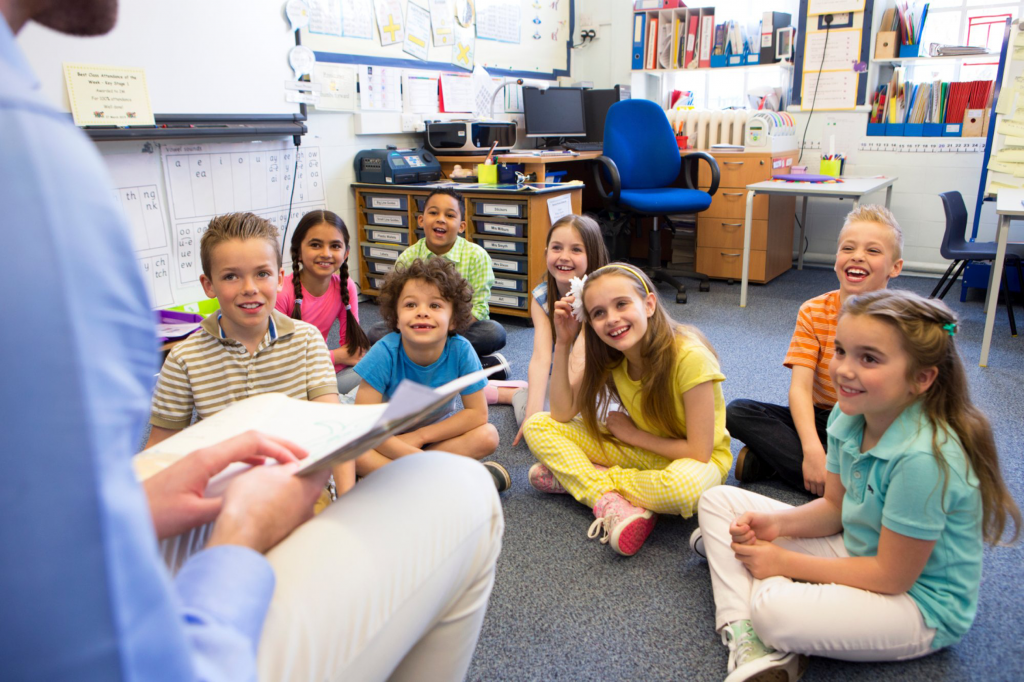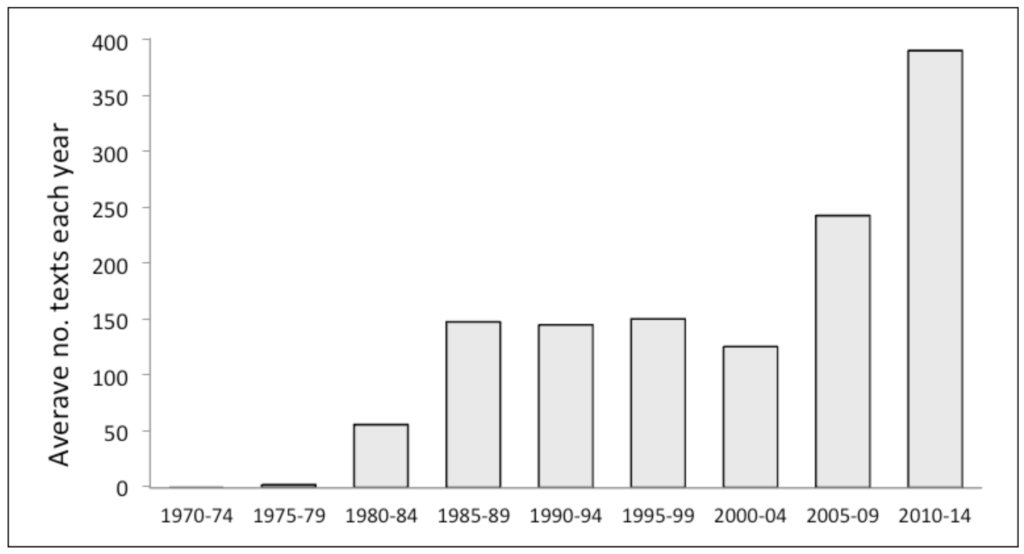
Learning to Learn (L2L) is a branch of educational theory and practice concerned with helping people become more effective learners. As can be seen in Figure 1, the amount of literature published on L2L has expanded significantly throughout the last 40 years. This literature centres around the concept of metacognition – often taken to mean ‘thinking about thinking’ – following the introduction of the term by John Flavell in his 1976 paper Metacognitive aspects of problem-solving.
Figure 1: Published literature on ‘Learning about Learning’ *

* As featured on eric.ed.gov
Table 1 lists some examples of educational programmes which have appeared in the literature on metacognition throughout this period. These programmes vary in focus and scale. However, it is also clear that they overlap in significant ways. For example, it could be said that initiatives such as ‘Learning to Think’ and ‘Thinking about Thinking’ centre around metacognition, whereas ‘Learning about Learning’, ‘Learning How to Learn’ and ‘Thinking Together’ involve broader notions of meta-learning and self-regulation. Explaining the difference between these two notions, Chris Watkins describes metacognition as ’awareness of thinking processes, and “executive control” of such processes’, while ‘meta-learning (making sense of one’s experience of learning)... covers a much wider range of issues than metacognition, including goals, feelings, social relations and context of learning’ (Watkins, 2001, p1). Underscoring the distinction, Watkins asserts: “metacognition is a defining characteristic of our species: meta-learning is its dynamic epitome” (Watkins, 2001, p7).
Table 1. Examples of educational initiatives oriented toward metacognition.
|
Saljö, R. (1979) Learning about learning, Higher Education, 8, 443-451.
|
|
Hounsell, D. 1979, Learning to learn: research and learning in student development, Higher Education, vol. 8, pp. 453-469.
|
|
Novak, J.D. & Gowin, D.B. (1984) Learning How to Learn, Cambridge University Press.
|
|
Gibbs, G. (1986) Learning to Study. National Extension College.
|
| Perkins, D.N., Goodrich, H., Tishman, S., & Mirman O. J. (1994). Thinking Connections: Learning to Think and Thinking to Learn. Reading, MA: Addison-Wesley Publishing Group. |
|
Collins C. & Mangieri J. (Ed.) (1992), Teaching Thinking: an agenda for the 21st century. Hillsdale NJ, Erlbaum. |
|
Mercer, N., & Littleton, K. (2007). Dialogue and the development of children’s thinking. London, UK: Routledge.
|
| Claxton, G. (2002). Building learning power. Bristol: TLO Limited. Claxton, G, Chambers, M, Powell, G & Lucas, B. (2011) The Learning Powered School: Pioneering 21st Century Education. TLO, Bristol. |
|
Smith, A., Lovatt, M., & Turner, J. (2009) Learning to Learn in Practice: The L2 Approach. London: Crown House Publishing. |